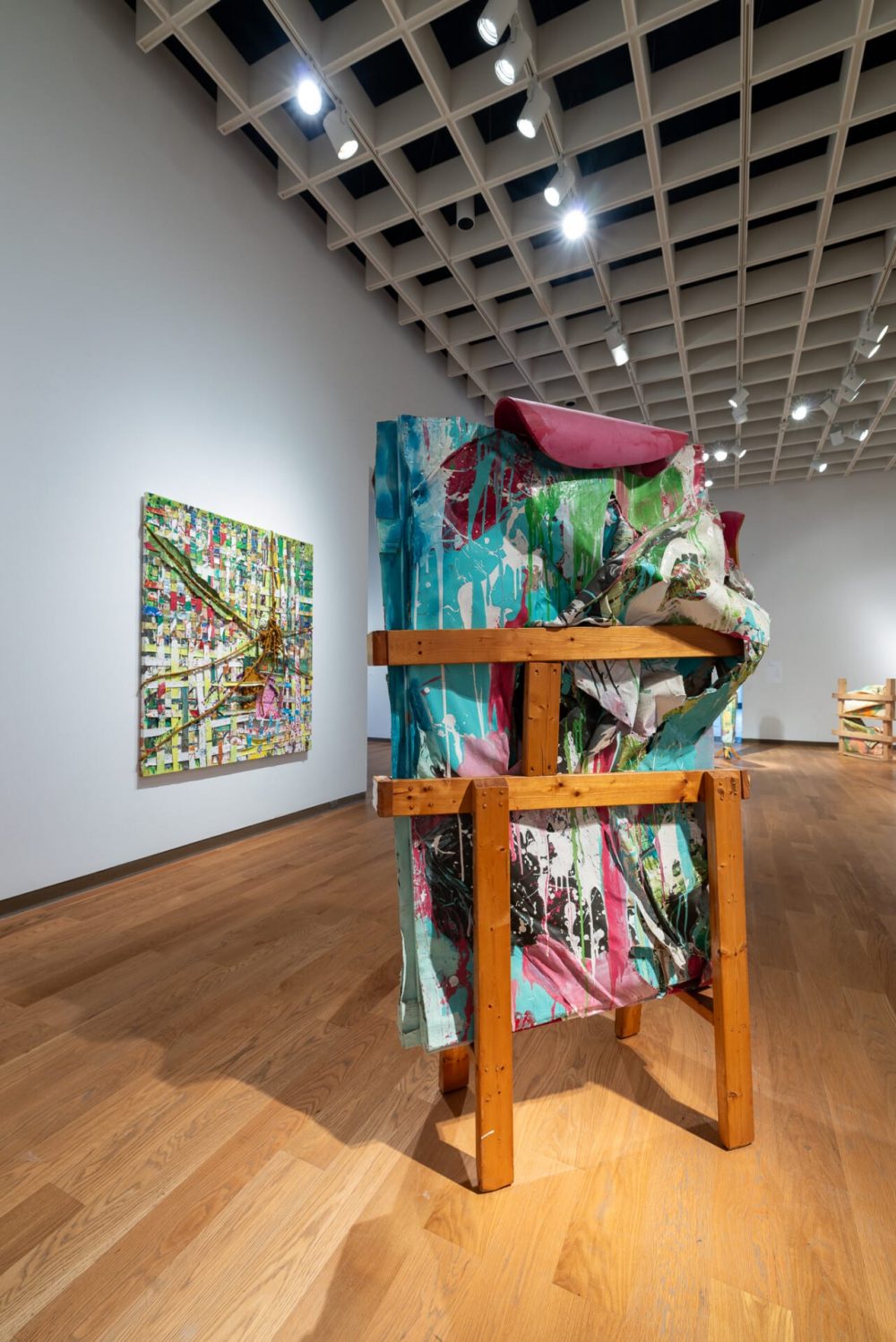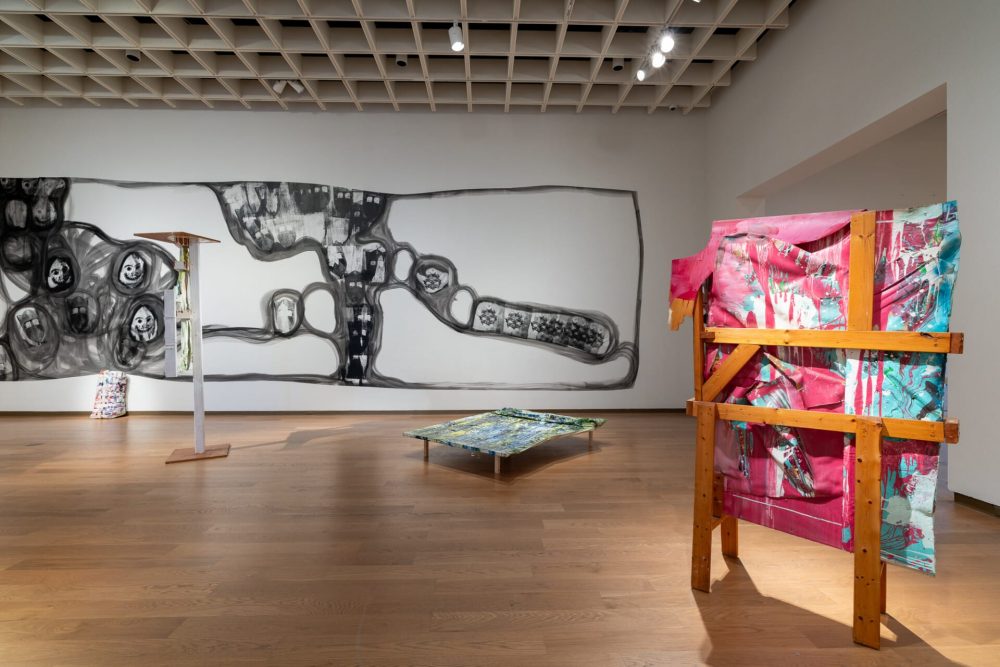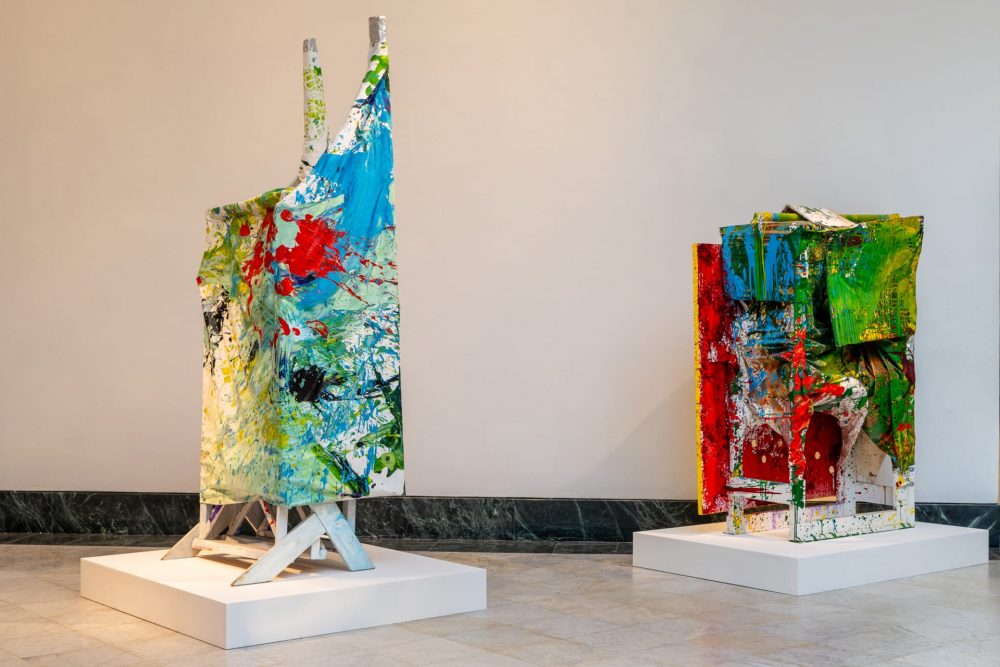The Inverted Sound of Painting is a solo exhibition featuring the work of French-American artist Edouard Prulhière, made possible through the generous donation of 34 pieces by Dr. James Cottrell and Mr. Joseph Lovett to the museum last year. The works highlight a transformative period in Prulhière’s career (1995-2005), marked by a personal crisis that led him to radically rethink his practice. During this period, he rejected traditional canvas painting, which to him had become conventional and culturally codified, but above all, was limiting and incapable of conveying his true artistic commitment. Instead, he sought to transform his canvases into dynamic pieces that blurred the line between painting and sculpture. These “volume paintings” as he calls them, were created by folding, crumpling, tearing, and cutting canvases while painting them, before rolling them up and screwing them onto their own reconstructed stretcher. For Prulhière this rejection of the painting as a two-dimensional object to be hung on a wall opened a source of possibilities and propelled his artistic research onto new territories.
From the onset, Prulhière’s works were heavily textured canvases in which various objects and materials were embedded, therefore the evolution to the volume painting seems almost as a natural continuation in the artist’s oeuvre. It also allows the viewer to consider the often-hidden side of painting. Literally, while the back often remains unseen, it is on this hidden side that another “painting” may exist, like a ghostly reflection of the visible image, revealing the stretcher or other elements that are typically concealed. “Everything that should not be shown is there,” says Prulhière. Conceptually, it also opens up a broader consideration of what painting is and what painting can be. The artist found this underside just as compelling as the front, which led him to experiment with his volume paintings, exploring the idea that the unseen, the invisible, has its own artistic value and its place in the quest for knowledge.
The work encourages us to look at and think of paintings differently. What if instead of looking at paintings we “listened” to them? The idea of “sound” in Prulhière’s work suggests the possibility of paintings emitting noises—literally, through the sounds of stretching, stapling, cutting, sawing, throwing; the splotches and the splatters, the brush, and the hammer—but also, rather conceptually. What if a painting could speak? What would it tell us? These questions propose another narrative chain and a new point of view, encouraging us to look at a series of sensitive micro-events that enhance the classical sequence of cause and effect, with new projected ends, their realizations, and their consequences. For Prulhière, the act of painting is a narrative process, in which each element—the body, gestures, surfaces and materials—link fragments and concepts, sometimes antagonistic, to a common origin.
Prulhière’s method of painting also embraces the unpredictable. He creates tension by introducing unforeseen elements into the creative process, allowing chance, his imagination, and unconscious impulses to guide his work. This approach to abstraction nurtures a space of freedom within his work, one that is not bound by traditional expectations or established norms. It is a process of transformation, where meaning is fluid, and anything seems possible.






